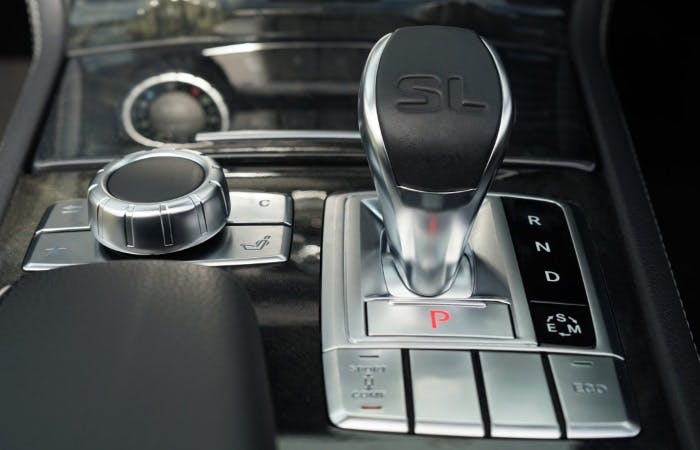
Back in the day, manual cars were the default choice for most new drivers. Nowadays, however, more and more drivers are opting for automatic cars—not having to deal with the pesky clutch is seen as an opportunity too good to pass up. Though they have the reputation of being easier to drive, they can be difficult to adjust to if you’re not fully prepared. That’s why we’ve put together a guide that walks you through how to drive an automatic car.
We’re going to take you through what makes an automatic car different from a manual car. We’ll also run through the process of driving an automatic car, along with some general tips to help you become an auto pro!
Whether you’re a learner driver taking the plunge in an automatic car, or an experienced manual driver looking to step over to the dark side, it’s important that you’re aware of how different automatic cars are to manual ones. Though they can be more straightforward to drive, they do come with a few quirks that you need to be aware of.
1. Learn how automatic gearboxes work
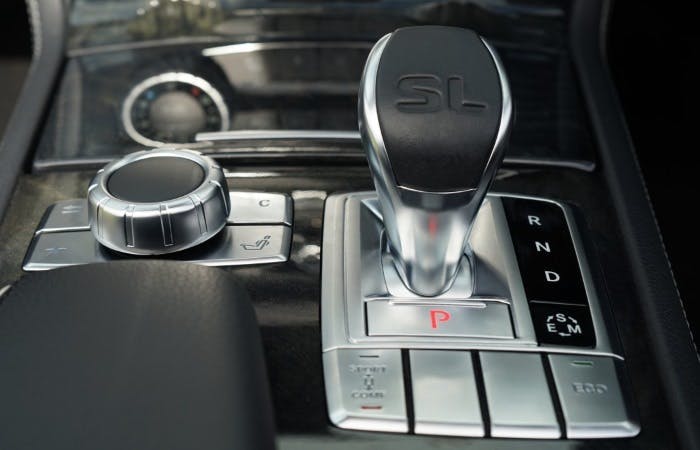
Before we get into the nitty gritty of how to drive an automatic car, we’ve first got to look at what makes an automatic car so different from a manual one. It all ultimately boils down to the gearbox. If you’ve learned to drive in a manual car, you’ll be all too familiar with the pain of using the clutch pedal and gearbox. With 5 to 6 forward gears, plus reverse, you’ll be used to having to move through them as you drive—it’s a process that can take some learners weeks to master. When you get behind the wheel of an automatic car, however, you'll be looking at a different set of labels.
Automatic gearbox labels:
- P - Park: as the name suggests, this gear is to be used when you’ve parked your car and intend to get out. It should not be used when you’re moving.
- R - Reverse: this is exactly the same as the reverse gear in a manual car. You’ll use it whenever you want to reverse your car.
- N - Neutral: as with the neutral gear in a manual car, this gear is to be used when you’re stationary, e.g., stuck in traffic.
- D - Drive: whenever you want to move your automatic car, this is where the gear stick needs to be. It’s just that simple!
As you drive, your car will automatically choose gears according to the speed you’re driving at. You don’t have to do anything at all. If you’re driving quickly, the automatic transmission will push to a higher gear, and vice versa if you’re driving at a lower speed.
Depending on your automatic car model, your gearbox might come with additional labels:
- 1 - first gear
- 2 - second gear
- S - Sport: giving you more revs and sharper acceleration when driving at a particular speed
Wondering why an automatic car has options for first and second gears? Well, in certain situations, a driver might need to travel at a lower gear and need the option to override the gear chosen by their automatic car. Some car models take this a step further by including paddle shifts. These paddles will rest on either side of your steering wheel and will enable you to manually move between gears. And that’s about it, without us getting too technical.
If you’re struggling to decide on which transmission is best for you, head on over to our breakdown of automatic vs manual cars.
2. Master the pedals
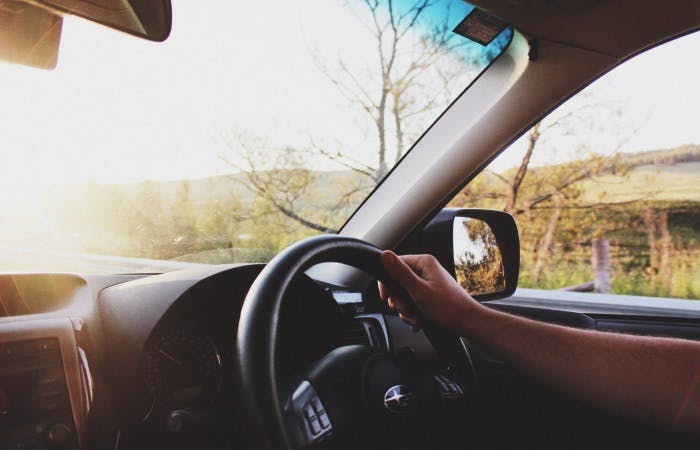
As we’ve already mentioned, one of the first things you’ll notice when you get behind the wheel of an automatic car is the different gearbox. Another thing that might stick out to you is the lack of a clutch pedal.
You’ll only have a brake pedal and an accelerator pedal—on the left and right, respectively. In a manual car, you’ll have your left foot at the ready at all times. You’ll need it to depress the clutch pedal whenever you want to come to a stop or change gears. In an automatic car, however, you can pretty much forget all about your left foot. You’ll only need your right foot when driving. It can be incredibly difficult trying to adjust to this at first. For starters, your muscle memory will have you moving your left foot towards the brake pedal as if it was the clutch.
Additionally, you might be tempted to use your left foot to brake. You’ll want to avoid doing this, as you likely won’t be used to using the brake with your left foot, meaning you might not press down with enough force when you need to. Until you practice, stick to using your right foot for both pedals.
3. Use the gearstick
Your automatic car will start out in Park (P) and your handbrake will be engaged. Once you’re ready to move, you’ll need to firmly press down on the brake pedal to start the engine. The key word here is firmly. If you’re too gentle, it won’t start.
To get going, you’ll need to switch the gear stick to Drive (D). Once you’re ready to start moving, all you need to do is gently press your foot down on the accelerator pedal. As you progress, you can control your speed by pressing down on the accelerator to increase your speed, or pressing down on the brake pedal to slow down.
Unless you’re facing a particular scenario (which we’ll look at below), you shouldn’t have to manually override the gearbox. Just let your car do all of the work for you!
What you need to be aware of in an automatic car
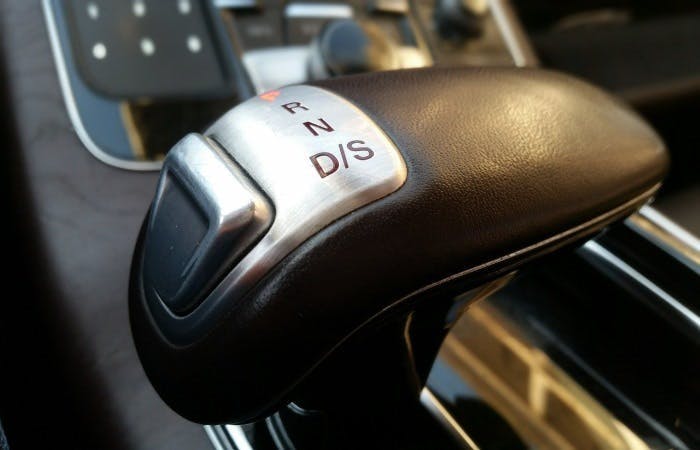
Driving an automatic car might sound simple enough, but they do come with a few quirks that you need to be aware of. There are also a few scenarios in which you might have to take over. Let’s take a look, shall we?
The creep method
In a manual car, you can make careful use of the biting point to move forwards gently. This is handy when moving off, when you’re stuck in stop-start traffic and during manoeuvres. You don’t have the luxury of using the biting point in an automatic car, though. Instead, you need to make use of the creep method. (Trust us, it’s not as weird as it sounds!)
If you slowly move your foot off the brake pedal as you disengage the handbrake, you’ll feel your car start to move forwards. This is otherwise known as “creeping”. It’s a useful method for when you want to ease yourself in and out of a parking space, not to mention manoeuvres.
Once you want to start moving properly, all you need to do is gently press your foot down on the accelerator pedal.
Heavy braking, corners and bends
If you’re making the switch to an automatic car, you’ll need to get used to having to brake more heavily. Automatic cars aren’t as responsive as manual ones—they don’t offer the same level of engine braking. So, when you want to slow down, it will take much longer for the car to respond.
If you’re heading towards a corner, bend or eventual stop, taking your foot off the accelerator won’t reduce your speed quickly enough. Instead, you’ll need to be firmer with the brakes and use them in a progressive manner. Preparation is important here. If you know you need to slow down, take your foot off the gas well in advance.
If you don’t plan properly, your car could have you going around the corner or bend much faster than you’d intended.
Hill starts
If you hate hill starts, you’ll be pleased to hear that they tend to be much easier to do in an automatic car. You don’t have to faff about with finding the biting point or worrying about heavy rollback. If you’re parked on a hill, you just need to switch to Drive (D), take your foot off the brake and then steadily press the accelerator pedal. Once you feel the car move, disengage the handbrake and be on your merry way.
If you’re looking for more information about this, read up on our guide to hill starts in an automatic car.
Downhill
You’ve got to be very careful when driving downhill in an automatic car. Due to the angle, and gravity, you’ll naturally be going at a pretty high speed. Your automatic transmission will therefore attempt to switch to a higher gear.
This is the exact opposite of what you need when going downhill! If you’ve got the lower gears available, you’ll want to manually override the gearbox to a lower gear. If you don’t have lower gears available, you’ll be able to slow things down by steadily coming up off the accelerator and pressing down on the brake pedal in a progressive manner.
As long as you do so in advance, you’ll be able to get your speed down to a more suitable level.
Overtaking
If you’re driving along a dual carriageway or motorway, and you need to overtake a car, you might find that the automatic transmission isn’t giving you enough speed. This is where the kick-down approach comes in. You can override your automatic gearbox temporarily—forcing it to stay in the lower gears for much longer, giving you higher acceleration.
To do this, you simply need to press your foot firmly down on the accelerator pedal. You need to keep your foot there until you reach the speed you’re after.
Once you’re done, slowly ease up off the accelerator and your car will switch back to a normal speed and pick the best gear.
The perks of going automatic
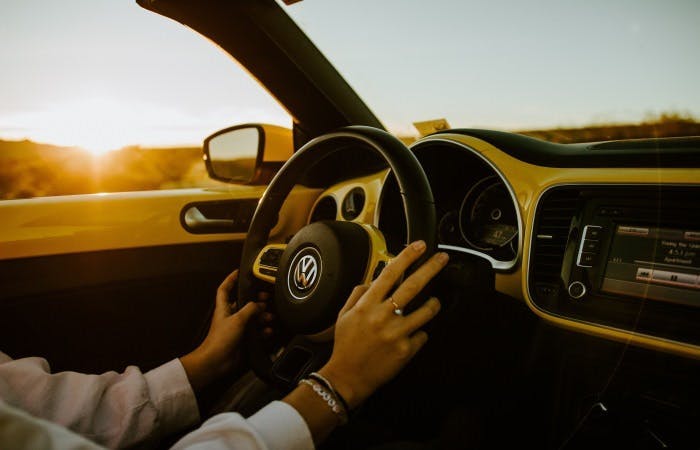
Not having to worry about gear changes
One of the biggest problems that manual drivers have to deal with is the pesky clutch pedal. If you’re not built for multi-tasking or hand-eye coordination, it can be a pain having to pay attention to the road ahead, all the while figuring out which gears you need and when. With an automatic car, however, you can wave that problem goodbye!
Less wear and tear
In case you weren’t aware, clutch pedals undergo a lot of wear and tear throughout a manual car’s lifespan. Considering how much drivers typically use the pedal on a day-to-day basis, it’s not surprising that they eventually need replacing. (This can be a costly affair!) It’s one of the reasons why manual driving instructors need to upgrade their cars every few years. With an automatic car, it’s not an issue.
You can enjoy stop-start traffic
Is there anything worse than having to sit in traffic in a manual car? One minute you’re stationary, with your handbrake on and in neutral gear. The next minute, you’ve got to switch to first, take off the handbrake and slowly move forward. Times that by fifty and you’ve got the makings of an average traffic jam for a manual driver.
If you’re an automatic driver, you don’t have to touch the gear stick at all! You can stay in Drive (D) and creep forward by taking your foot off the brake pedal. It’s a new dawn! You might find yourself actually enjoying traffic jams now! (Or, at least, dealing with them with a little less road rage!)
You can focus on the road
Now, we’re not saying that you don’t have to worry about anything when you’re driving an automatic car. You still need to be aware of your surroundings and plan ahead, especially when it comes to slowing things down. That being said, there’s a nice simplicity about not having to faff about with changing gears or worrying about stalling the car. You can just place all of your focus on the road ahead.
Practice makes perfect
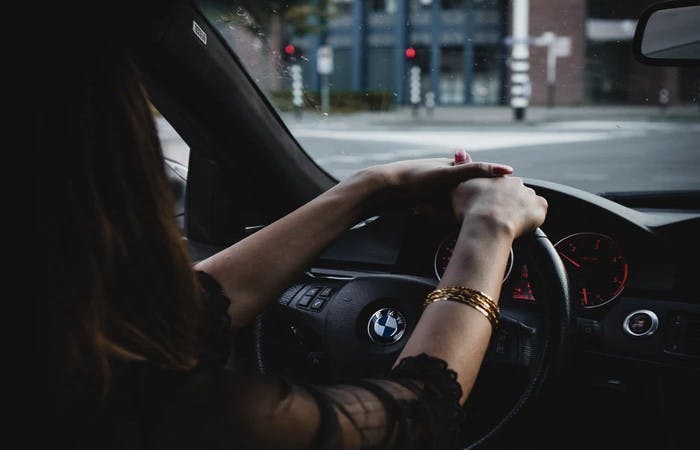
As with every other aspect of driving, whether it’s junctions, roundabouts or parallel parking, practise makes perfect. If you’re a qualified driver looking to make the switch from a manual car to an automatic one, you need to spend some time getting accustomed to the new controls and way of driving. Trust us, it will take you a while to get used to not having a clutch. (If you’ve bought a new car, read up on our guide to adjusting to a new car.)
If you’re a learner driver who has decided to drive an automatic car, we’d recommend taking an intensive driving course with one of our very own automatic instructors. They’ll show you how to drive an automatic car, how to pass your driving test, and help you become a safe and confident driver.
How to drive an automatic car: FAQs
Do automatic cars have a clutch?
Automatic cars don’t have a clutch because any gear changes are done, as the name suggests, automatically. In a manual car, you have to use the clutch pedal when changing gears, but automatics do the hard work for you. Since you don’t have to worry about the clutch, changing gears, or stalling, an automatic car is generally easier to drive.
How do I start an automatic car?
If you’re new to driving an automatic car, it might be a bit tricky to get used to at first. To start the car, press your right foot down on the brake pedal and turn the engine on with your key or start button. Keep the brake pedal pressed down and put the car into drive (D) if you want to move forward or reverse (R) if you want to move backwards. Lift your foot off the brake, and the car will start to creep forwards. Then gently press your right foot on the accelerator and you’ll gain speed. Once you’re moving, the gearbox will select the right gears for you.
Can you jump start an automatic car?
It happens to the best of us—you leave your lights on and drain your battery. The good news is that you can jump start an automatic car in the same way you would a manual car. It’s recommended that you follow your owner’s manual for instructions, but the procedure is generally the same across most makes & models.
You’ll need a working car and a set of jump leads. Open the bonnets of both cars, turn off the engines and remove both keys from the ignitions, and connect the red wire to the working car’s battery at the positive, or red, end. Connect the other end of the red lead to the dead battery’s positive end and then repeat the process for the negative ends. Your car should start after a few attempts. Leave it running for 5–10 minutes, then remove the black lead first. If all is well, remove the red lead and you’re on your way.
Is an automatic car easier to drive?
You drive an automatic car in the same way you drive a manual, but with one major exception. An automatic car’s gearbox will change gears for you, meaning you don’t have to worry about what gear you should be in or the clutch pedal. Since there’s less to think about, driving an automatic is easier than driving a manual. The only downside is that you won’t be able to drive a manual car after passing in an automatic unless you take another test to upgrade your licence.
Is there a clutch in an automatic car?
In a manual car, the clutch pedal is used when changing gears. There is no clutch in an automatic car and the gearbox will select the right gears for you instead. In an automatic car, the only pedals you need to use are the brake and acceleration pedals. Most people use their right foot for both pedals, so an automatic car is especially handy for people who have a disability or lack of control in their left foot.
What is different about a practical test in an automatic car?
Nothing! The practical test is the same whether you take it in an automatic or manual vehicle. You don’t need to book a specific test depending on the transmission of the vehicle—all you need to do is show up to the appointment with the car you want to take it in.
Subscribe for driving advice, offers & more
We'd love to let you know about our courses, news and offers via email. You may unsubscribe at any time.
Star Genie Limited trading as PassMeFast. Company number 10093359
Copyright © 2024 owned by Star Genie Limited
PassMeFast, Blue Tower, MediaCityUK, Salford, M50 2ST
